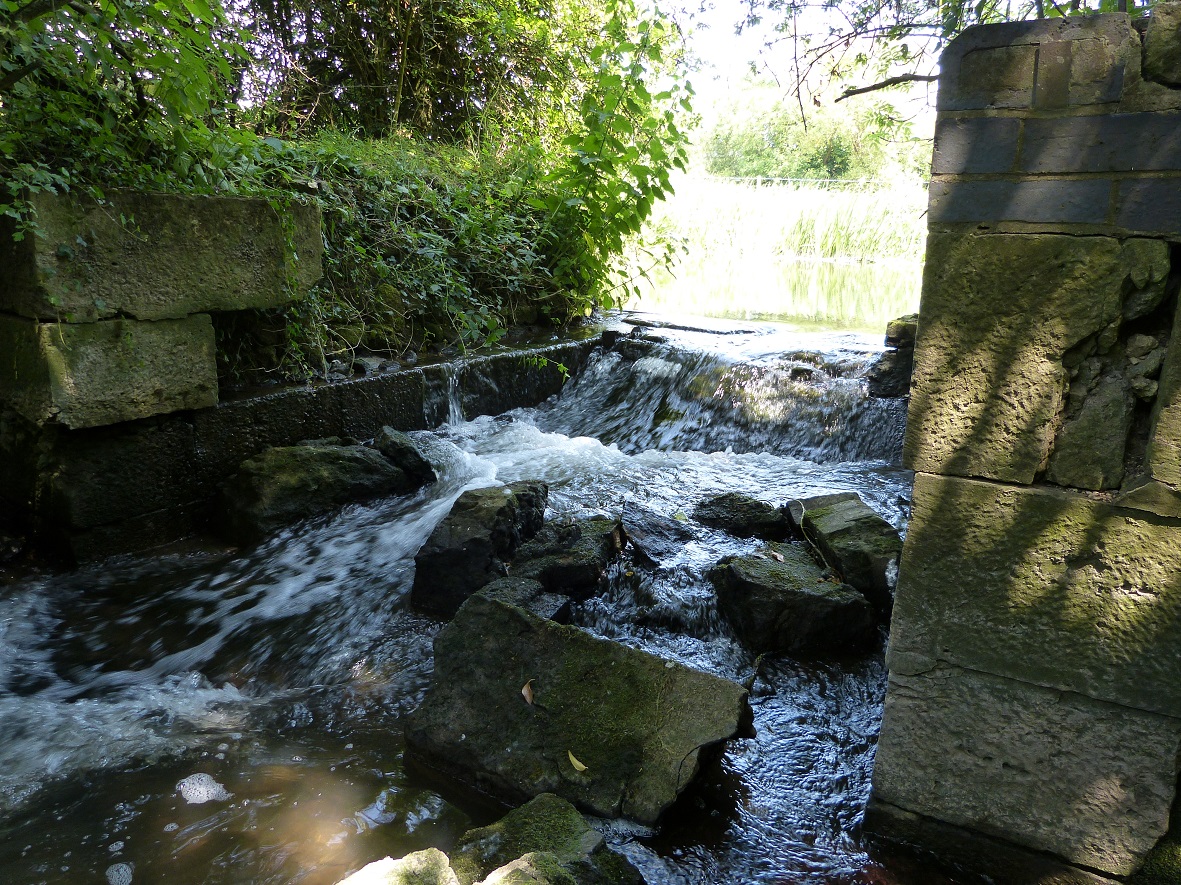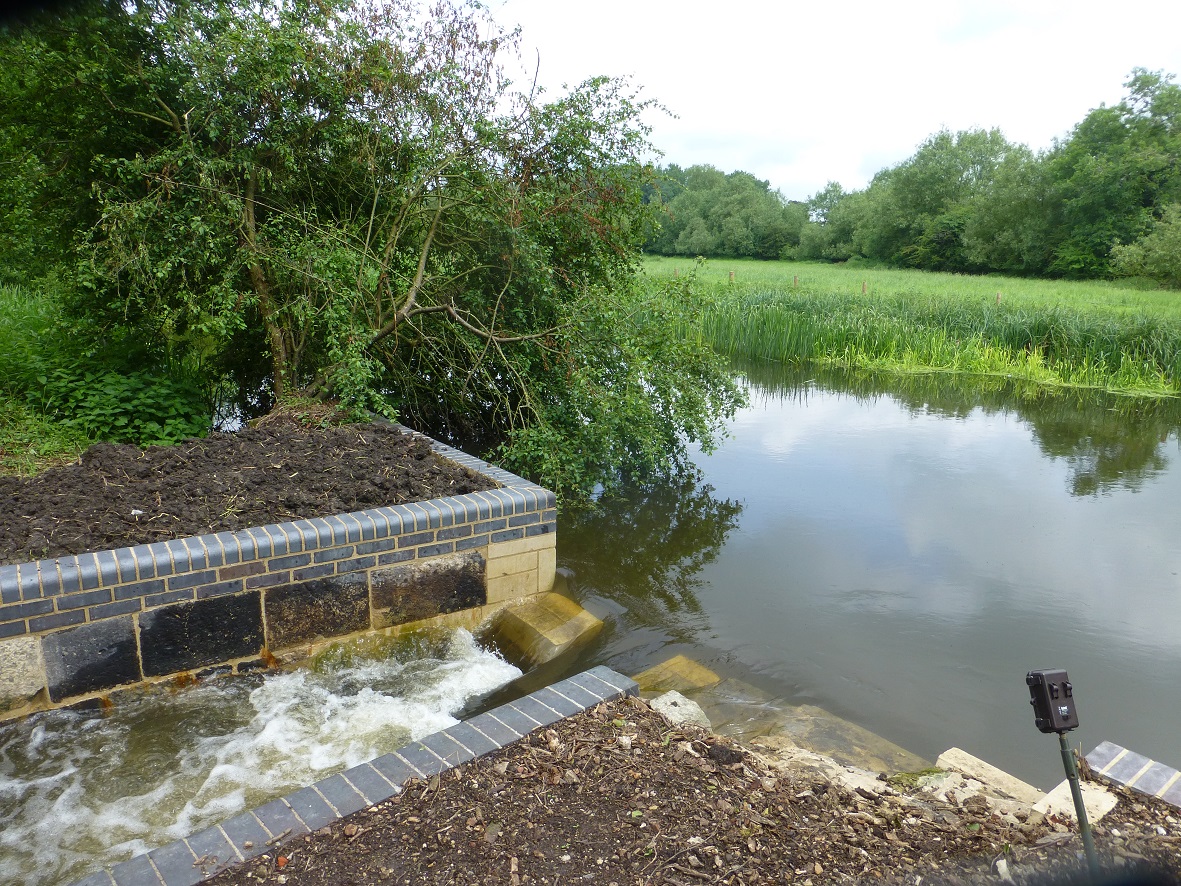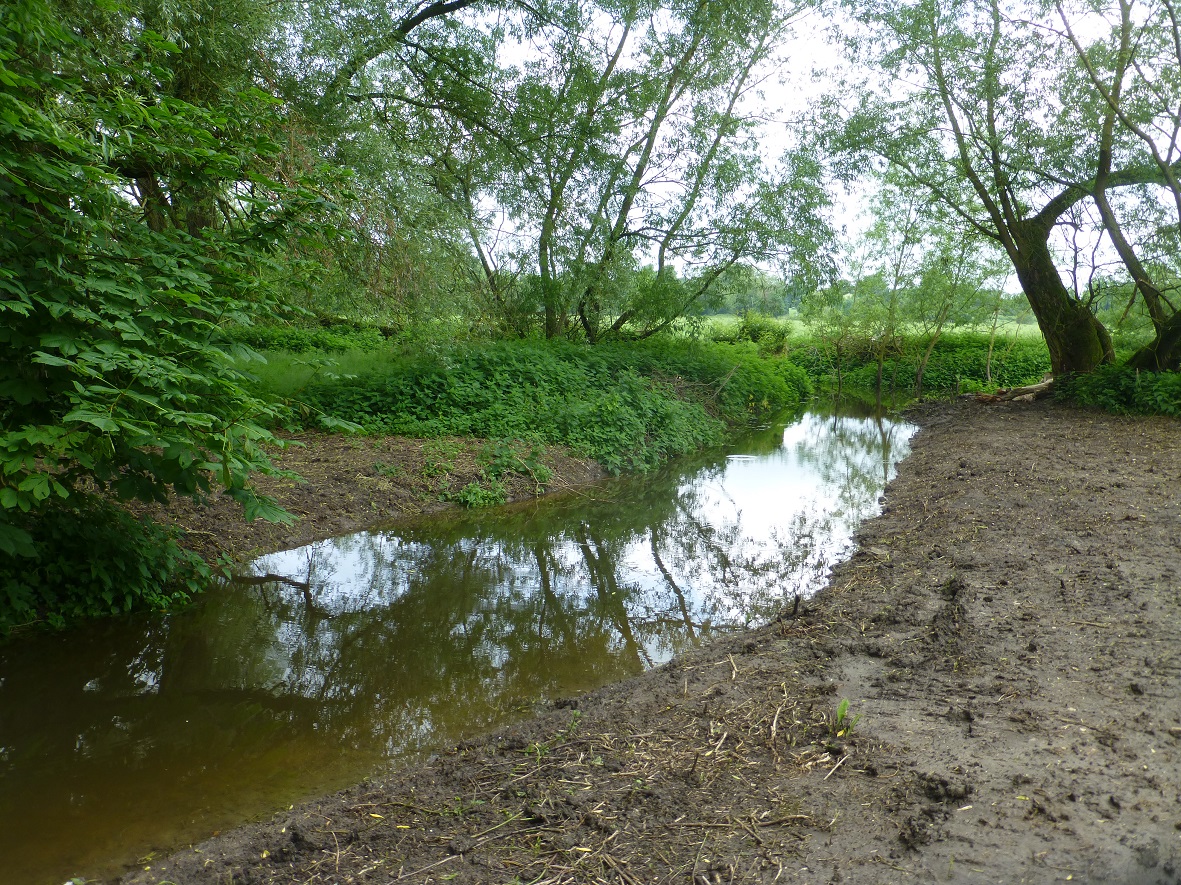There was no passage for fish species through any of the channels in the Waterstock Mill section of the River Thame, Oxfordshire except during very high flows
There was also a lack of fish spawning habitat due to silting, which covered gravels on the river bed. These gravels are vital for fish to successfully spawn and to improve freshwater invertebrate populations.
This project sought to remedy these problems and improve the river for fish species as well as many other native wildlife species by carrying out improvement works on one of the three channels – Back Ditch. The current sluice structure was in a state of disrepair (see image bottom right) and the most major stage of this project was making the structure sound and modifying it to allow fish passage. Due to the height difference between the Back Ditch and the main river, a pool was created between the lips of the weir to allow fish to have a take-off point in which to get over the second lip.
Gravel has been introduced to increase the height of the riverbed, allowing easier fish movement and providing habitat diversity. Installation of berms using hazel faggots and onsite materials have created better in channel flow.
These will soon establish with marginal plants and further enhance the site. A fish refuge has been instated, small fry will use this and in times of low flow this backwater will be a sanctuary (pictured bottom right).
Tree works have opened up metres of river, delivering a better balance of light and shade, this will benefit the river and should encourage aquatic plant growth. A community event is planned by River Thame Conservation Trust later in the year to show off this project and explain it to local residents, with kind permission of the landowner.
Project completed June 2018


“I saw a kingfisher perching on top of the stakes in one of the berms and dive into the water to fish, and then come back to perch again which is great news.” Landowner of Waterstock Mill








